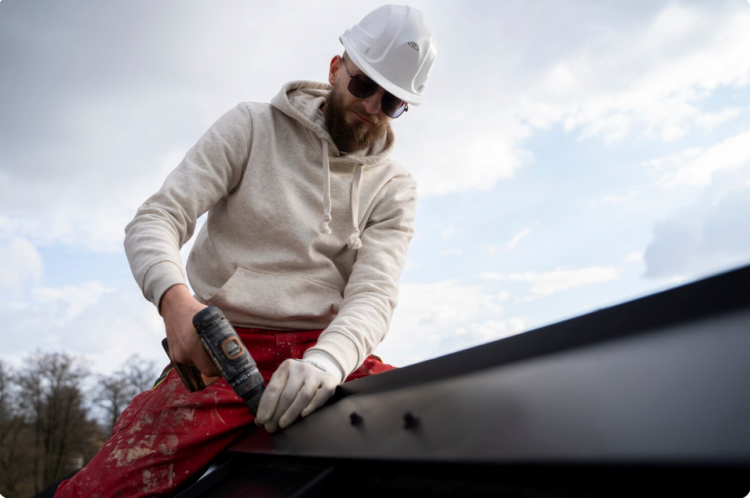Hurricane season can be unpredictable, and when strong winds, heavy rain, and flying debris start hitting, your roof becomes your home’s first line of defense. That’s why getting a roof inspection before the storms roll in is one of the smartest things you can do. A professional inspection helps identify weak spots early and ensures your home has the most stable roof design possible to stand up against hurricane-force winds.
1. Start with a Professional Roof Inspection
Before hurricane season begins, schedule a thorough roof inspection. Even if your roof looks fine from the ground, hidden issues like loose shingles, cracked tiles, or weakened flashing can turn small problems into big disasters when the winds pick up. A roofing professional can safely check your roof for damage, secure loose materials, and make the necessary repairs to help prevent leaks or structural issues during the storm.
2. Clear Out Gutters and Downspouts
Clogged gutters are a common cause of roof leaks during hurricanes. When rainwater can’t drain properly, it pools on your roof, adding weight and creating water pressure that can force moisture under shingles. Before storms approach, clean out all leaves, sticks, and debris from your gutters and downspouts. Make sure the water can flow freely away from your home’s foundation. Installing gutter guards can also help keep debris out and reduce maintenance.
3. Trim Trees and Remove Loose Branches
Tree limbs can be one of the biggest threats to your roof during a hurricane. Strong winds can snap branches or topple trees, sending them crashing onto your home. Trim back branches that hang over your roof or are close enough to cause damage if they break. Removing weak or dead trees near your house can also reduce your risk.
4. Secure Loose Roof Fixtures
Anything that’s not tightly attached to your roof can become a dangerous projectile in high winds. Check for loose vents, antennas, or satellite dishes, and make sure they’re securely fastened. If you have solar panels or other rooftop equipment, have them inspected too. Securing these items can prevent not only roof damage but also accidents caused by flying debris.
5. Reinforce Vulnerable Roof Areas
Some areas of your roof, like edges, flashing, and joints, are more vulnerable to wind damage. Reinforcing these spots with extra sealant or weatherproof materials can make a big difference when a storm hits. Ask your roofing professional if hurricane clips, roof straps, or additional fasteners would help strengthen your home’s structure. These small upgrades can dramatically improve your roof’s ability to withstand strong gusts.
6. Prepare for the Aftermath
Even with the best preparation, hurricanes can still cause damage. Before the season starts, take clear photos of your roof and home exterior. Having “before” pictures makes filing an insurance claim much easier if you ever need to. It’s also smart to have supplies ready, like tarps, flashlights, and basic tools, to cover minor damage right after a storm passes.
7. Consider Roof Material and Design
If your roof is older or showing signs of wear, this might be the time to consider upgrading to a more durable material. Metal, concrete tile, or impact-resistant shingles are known for handling high winds better than standard asphalt shingles. When possible, choose materials and designs rated for hurricane-prone areas. A strong, well-built roof isn’t just about protection it also saves you from costly repairs and gives you peace of mind all season long.
Stay Ready, Stay Protected
Hurricane season doesn’t wait, and neither should you. A roof inspection is more than just a precaution; it’s your best defense against potential disaster. By addressing small issues now, reinforcing weak areas, and keeping your roof clean and secure, you can weather the season with confidence. Remember, a stable, well-maintained roof protects more than just your house; it protects your family and everything you hold dear.






